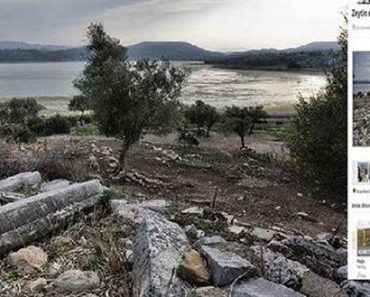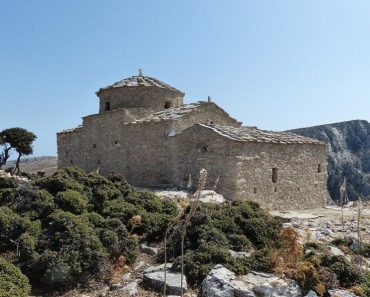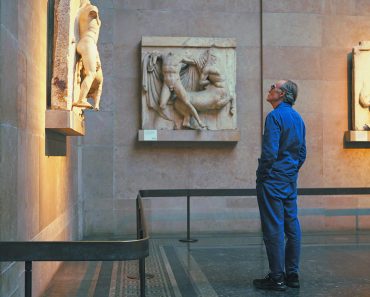Published on
November 24, 2025
The Heraklion Chamber in Crete recently showcased the promotion of the inclusion of Minoan Monuments in UNESCO’s World Heritage listings. The aim of the event was the promotion of the Minoan sites located in the Heraklion Regional Unit of Crete. The event also outlined the procedures to be undertaken for the inclusion of the Minoan sites in the UNESCO listings.
The event displayed to the audience a review of over 30 archaeological sites fully located in the Heraklion Region. These sites, located in Heraklion Palaces and other tiny settlements of the Minoan Civilization will be a significant addition for the comprehension of the Minoan Culture. The Minoan Civilisation’s scattered settlements and sites will also add to the comprehension of the more advanced Maritime Civilization to the rest of the World and Europe.
Marketing of Minoan Monuments in the Heraklion Area
Heraklion, the largest city in Crete, possesses numerous Minoan Monuments indicating the sophisticated culture that occupied the island during the Bronze Age. The Palace of Knossos is the most renowned and provides tourists with an appreciation of the Minoan Civilisation. Other Heraklion sites of importance are Phaistos, Margarites, and Gortyn, indicating the area’s prosperity.
The Heraklion Chamber Event highlighted the importance of these sites and the Cooperative Work of Local Authorities, the Ministry of Culture, and other Participants in the Defense and Promotion of these Valued Monuments. The presentation discussed the criteria and procedures involved in applying for a site to achieve the status of a UNESCO World Heritage Site, which would allow for enhanced protection, marketing, and preservation of the site.
Minoan Culture Initiative Committee and UNESCO efforts
The reference to the work being done by the Minoan Culture Initiative Committee to inscribe Minoan Culture monuments to UNESCO World Heritage continues to be a cornerstone of the event. For the Committee, the Inscription of Minoan Monuments to UNESCO World Heritage involves a detailed procedure, legally complex, and running to years for which the Committee must liaise with UNESCO, compile game-changing answers to questionnaires about the significance of each site, and document the extent of compliance with the World Heritage Committee’s rigorous requirements.
The inscription of Minoan-era monuments to the UNESCO World Heritage List is the first and most vital step to the documentation of Minoan Culture and the Cretans. It is also a means to safeguard these ancient monuments for the use by future generations. It is also a supports and encourages the sustainable use of Crete and regional tourism. With the monuments and sites, which are a testament to the ancient/modern Cretan Minoan civilisation, the world will ascribe value and significance to sustainable access and use of the region.
Historical Significance of Minoan Seafarers
This active maritime engagement is also critical to understanding their contributions to history, Minoan civilisation for maritime trade and its impact on surrounding cultures. The Minoan civilization, for its seafaring abilities, was a carrier and transmitter of culture and civilisation to many parts of the Mediterranean and, ultimately, to parts of Europe. The Minoans, as the first Mediterranean seafaring civilisation, established trade routes from Crete to Egypt, the Levant, and other parts of Europe, building advanced maritime networks and shipbuilding.
The Minoan seafarers settled along the Mediterranean and were the first to integrate commerce, trade, and cultural exchange. The una проблема takes the form of the Mediterranean, their cities’ antiquities and tombs. For tourists on the Minoan Sites, teaching this component of the Minoans contributes to a rich understanding of the Global Contributions of the Minoans.
The Intersection of Tourism and the Minoan Heritage of the Site
As one of the main branches of the economy of the island of Crete, the sustaining and the increasing of the Minoan culture and its tourism is vital for the economics of the region. The interest within the field of Minoan archaeological tourism and culture is increasing and is greatly reflected within the Minoan tourism sites of Knossos and Phaistos. Visitors gain insights of the civilization through the many activities and services offered within the site, including guided tours, artefacts, and educational aid.
The increasing effort regarding the Minoan heritage sites and their respect is continuously symbolizing and indicating to the prospective interest, on a global level, regarding the island of Crete and its hidden and numerous historical treasures. Tourism is about the combination of the modern and the ancient. The island of Crete offers to the tourists and visitors the wide selection of contemporary tourism services and amenities diverse and at the same time the opportunity to experience and learn the history and culture of the Mediterranean ancient civilization (one of the most important in the Mediterranean region).
Sustainable Tourism and Cultural Preservation
With growing global interest in the island of Crete, the preservation and protection of the island’s rich cultural and historical treasures must be prioritised alongside the growing tourism industry. In light of the recent inclusion of the Minoan Monuments in the World Heritage List, the respect and protection of the ancient sites will be a given. Sustainably responsible tourism and education of the public and visitors about the protection and preservation of Crete’s cultural treasures will ensure Crete remains a cultural tourism icon.
Conclusion
The recent event at the Heraklion Chamber is one of the first major milestones in the efforts to promote and protect the Minoan culture of the island of Crete. The continuing growth of tourism on the island reinforces the importance of placing Minoan-era sites on the UNESCO World Heritage List. This will help promote the sustainable management of the island’s tourism, as well as the conservation of the island’s rich cultural heritage. Crete is one of the top destinations for those wishing to explore the ancient world and enjoy the Mediterranean, due to its historical monuments, culture, and geography.


-370x297.jpeg)




